A day in the lab with Alán Aspuru-Guzik
Alán Aspuru-Guzik is the Lebovic Fellow and Program Co-Director of the Bio-inspired Solar Energy program at CIFAR, and a Canada CIFAR AI Chair at the Vector Institute. His work is ambitious: he aims to accelerate the discovery of new chemicals and materials that are useful to society by means of new technologies such as quantum computing, machine learning and automation. His research group, the Matter Lab, blends the work of a "dry lab" (a laboratory for applied analysis and computation) at University of Toronto's Department of Computer Science, and a "wet lab" (a lab for more high-risk experiments like manipulating chemical and biological matter) housed in the university's Lash Miller Chemical Laboratories building. We followed Aspuru-Guzik for a day as he moved between the two research spaces.
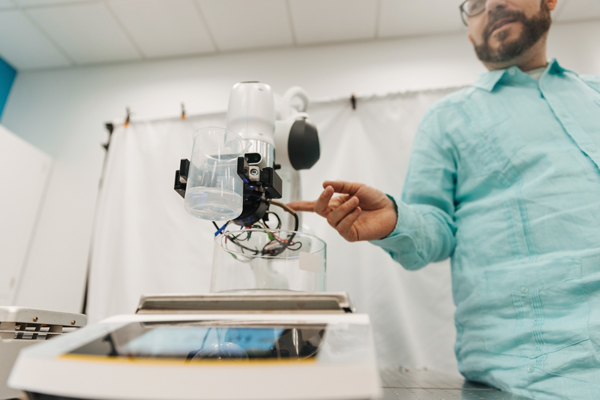
Alán starts his day at the ‘dry lab’. "I live here," he jokes. He demonstrates the capabilities of one of his lab’s robots. "The ability to see and recognize things is a much more complex process than you might imagine,” he notes. “This robot is unique because it doesn’t matter where the glass is, it knows how to pick it up and pour.”
Related Articles
-
Zeroing in on net zero: CIFAR program renamed to Accelerated Decarbonization
July 07, 2023
-
Year in Review: Top 10 CIFAR stories of 2021
December 22, 2021
-
MIT Technology Review | This chemist is reimagining the discovery of materials using AI and automation
October 27, 2021
-
The Globe and Mail: Canada 150 research chairs draw scientists fleeing Trump, guns and Brexit
April 04, 2018
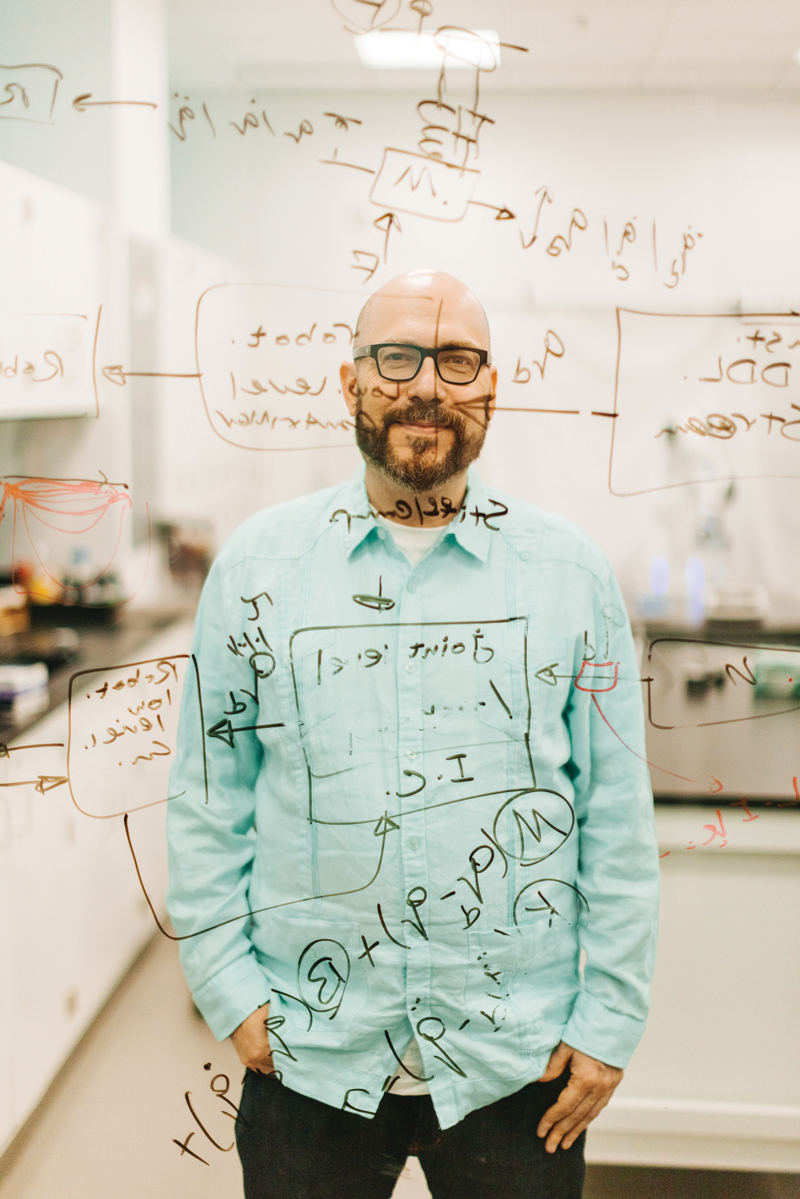
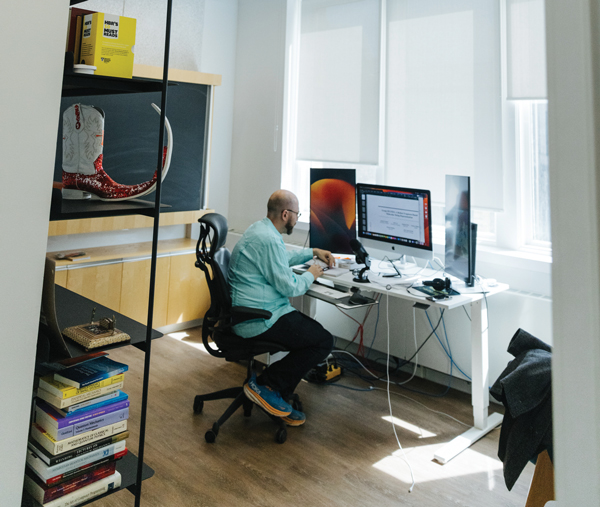
ABOVE: On a shelf in his office, Alán proudly displays brightly adorned red and white boots. “I grew up in Mexico,” he says. “The day I got tenure at Harvard, my Mexican grad students bought me these boots. They’re called dragon boots and they’re for dancing.”
LEFT: "CIFAR was very important for my recruitment to Canada as part of a network of researchers,” shares Alán, when asked about his work. “Not long after I arrived, I became a Canada CIFAR AI Chair which has allowed me to have the resources to interact and work with many computer scientists.”
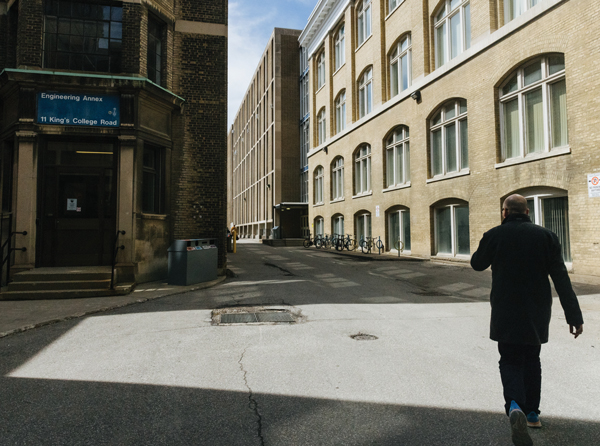
Alán starts his day at the ‘dry lab’. "I live here," he jokes. He demonstrates the capabilities of one of his lab’s robots. "The ability to see and recognize things is a much more complex process than you might imagine,” he notes. “This robot is unique because it doesn’t matter where the glass is, it knows how to pick it up and pour.”
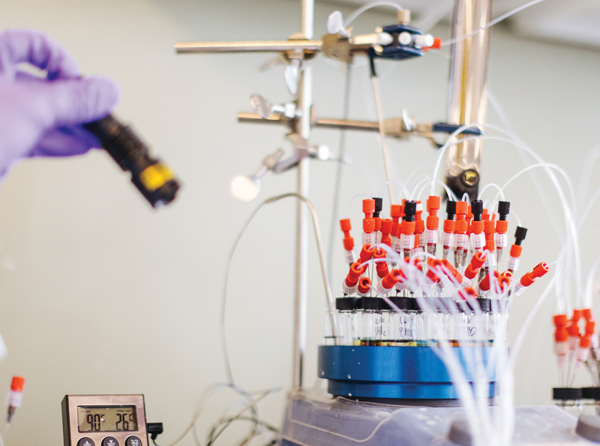
Over in the wet lab, Alán dons a white lab coat and safety gloves. "What you’re looking at is a chemical reactor — a self-driving lab for chemistry,” he explains. “We make several molecules at once. This lab does the real chemistry, while the other lab is thinking about the chemistry of the future."
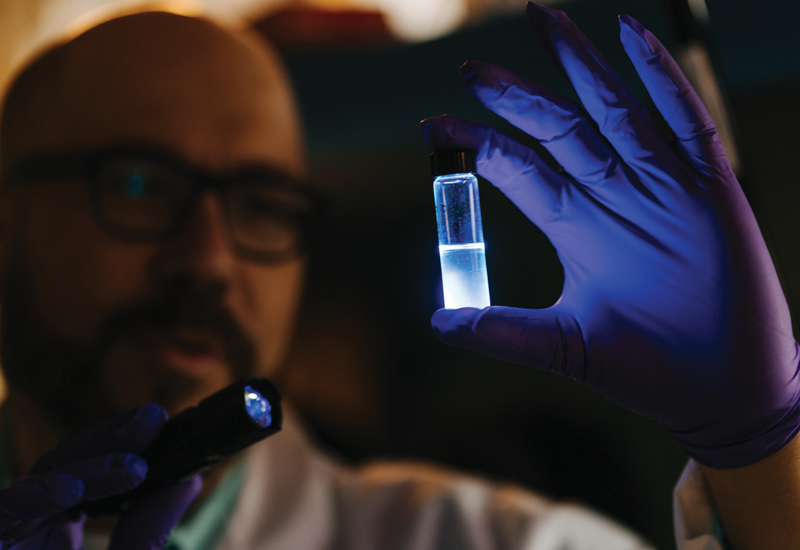
Amid lowlight, Alán demonstrates a magnificent fluorescent reaction. "These are actual organic laser molecules, some of the brightest molecules that fluoresce in the world — we hold the record for making them."
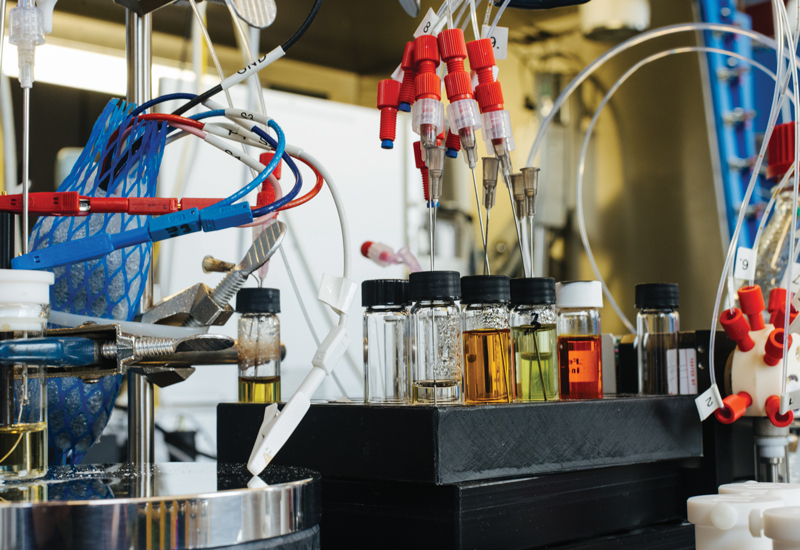
As the tour ends, he shares some of the ambition of his work. "This is a station that is testing molecules for organic batteries,” he notes. “We want to create the next generation of batteries to store the entirety of the world’s energy."